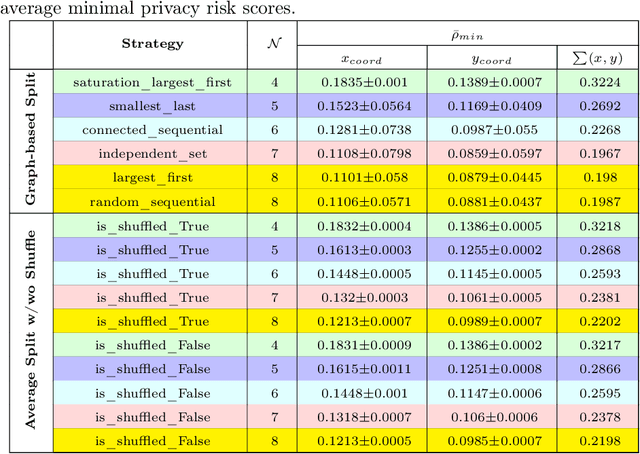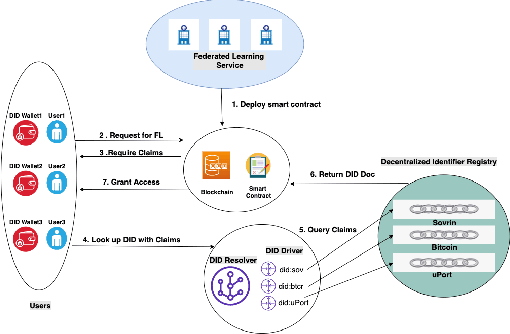Neel Kanwal
Bridging Simplicity and Sophistication using GLinear: A Novel Architecture for Enhanced Time Series Prediction
Jan 08, 2025



Abstract:Time Series Forecasting (TSF) is an important application across many fields. There is a debate about whether Transformers, despite being good at understanding long sequences, struggle with preserving temporal relationships in time series data. Recent research suggests that simpler linear models might outperform or at least provide competitive performance compared to complex Transformer-based models for TSF tasks. In this paper, we propose a novel data-efficient architecture, GLinear, for multivariate TSF that exploits periodic patterns to provide better accuracy. It also provides better prediction accuracy by using a smaller amount of historical data compared to other state-of-the-art linear predictors. Four different datasets (ETTh1, Electricity, Traffic, and Weather) are used to evaluate the performance of the proposed predictor. A performance comparison with state-of-the-art linear architectures (such as NLinear, DLinear, and RLinear) and transformer-based time series predictor (Autoformer) shows that the GLinear, despite being parametrically efficient, significantly outperforms the existing architectures in most cases of multivariate TSF. We hope that the proposed GLinear opens new fronts of research and development of simpler and more sophisticated architectures for data and computationally efficient time-series analysis.
PriCE: Privacy-Preserving and Cost-Effective Scheduling for Parallelizing the Large Medical Image Processing Workflow over Hybrid Clouds
May 24, 2024



Abstract:Running deep neural networks for large medical images is a resource-hungry and time-consuming task with centralized computing. Outsourcing such medical image processing tasks to hybrid clouds has benefits, such as a significant reduction of execution time and monetary cost. However, due to privacy concerns, it is still challenging to process sensitive medical images over clouds, which would hinder their deployment in many real-world applications. To overcome this, we first formulate the overall optimization objectives of the privacy-preserving distributed system model, i.e., minimizing the amount of information about the private data learned by the adversaries throughout the process, reducing the maximum execution time and cost under the user budget constraint. We propose a novel privacy-preserving and cost-effective method called PriCE to solve this multi-objective optimization problem. We performed extensive simulation experiments for artifact detection tasks on medical images using an ensemble of five deep convolutional neural network inferences as the workflow task. Experimental results show that PriCE successfully splits a wide range of input gigapixel medical images with graph-coloring-based strategies, yielding desired output utility and lowering the privacy risk, makespan, and monetary cost under user's budget.
Equipping Computational Pathology Systems with Artifact Processing Pipelines: A Showcase for Computation and Performance Trade-offs
Mar 13, 2024Abstract:Histopathology is a gold standard for cancer diagnosis under a microscopic examination. However, histological tissue processing procedures result in artifacts, which are ultimately transferred to the digitized version of glass slides, known as whole slide images (WSIs). Artifacts are diagnostically irrelevant areas and may result in wrong deep learning (DL) algorithms predictions. Therefore, detecting and excluding artifacts in the computational pathology (CPATH) system is essential for reliable automated diagnosis. In this paper, we propose a mixture of experts (MoE) scheme for detecting five notable artifacts, including damaged tissue, blur, folded tissue, air bubbles, and histologically irrelevant blood from WSIs. First, we train independent binary DL models as experts to capture particular artifact morphology. Then, we ensemble their predictions using a fusion mechanism. We apply probabilistic thresholding over the final probability distribution to improve the sensitivity of the MoE. We developed DL pipelines using two MoEs and two multiclass models of state-of-the-art deep convolutional neural networks (DCNNs) and vision transformers (ViTs). DCNNs-based MoE and ViTs-based MoE schemes outperformed simpler multiclass models and were tested on datasets from different hospitals and cancer types, where MoE using DCNNs yielded the best results. The proposed MoE yields 86.15% F1 and 97.93% sensitivity scores on unseen data, retaining less computational cost for inference than MoE using ViTs. This best performance of MoEs comes with relatively higher computational trade-offs than multiclass models. The proposed artifact detection pipeline will not only ensure reliable CPATH predictions but may also provide quality control.
A Dual Convolutional Neural Network Pipeline for Melanoma Diagnostics and Prognostics
Dec 14, 2023Abstract:Melanoma is a type of cancer that begins in the cells controlling the pigment of the skin, and it is often referred to as the most dangerous skin cancer. Diagnosing melanoma can be time-consuming, and a recent increase in melanoma incidents indicates a growing demand for a more efficient diagnostic process. This paper presents a pipeline for melanoma diagnostics, leveraging two convolutional neural networks, a diagnosis, and a prognosis model. The diagnostic model is responsible for localizing malignant patches across whole slide images and delivering a patient-level diagnosis as malignant or benign. Further, the prognosis model utilizes the diagnostic model's output to provide a patient-level prognosis as good or bad. The full pipeline has an F1 score of 0.79 when tested on data from the same distribution as it was trained on.
Enhancing Prostate Cancer Diagnosis with Deep Learning: A Study using mpMRI Segmentation and Classification
Oct 10, 2023



Abstract:Prostate cancer (PCa) is a severe disease among men globally. It is important to identify PCa early and make a precise diagnosis for effective treatment. For PCa diagnosis, Multi-parametric magnetic resonance imaging (mpMRI) emerged as an invaluable imaging modality that offers a precise anatomical view of the prostate gland and its tissue structure. Deep learning (DL) models can enhance existing clinical systems and improve patient care by locating regions of interest for physicians. Recently, DL techniques have been employed to develop a pipeline for segmenting and classifying different cancer types. These studies show that DL can be used to increase diagnostic precision and give objective results without variability. This work uses well-known DL models for the classification and segmentation of mpMRI images to detect PCa. Our implementation involves four pipelines; Semantic DeepSegNet with ResNet50, DeepSegNet with recurrent neural network (RNN), U-Net with RNN, and U-Net with a long short-term memory (LSTM). Each segmentation model is paired with a different classifier to evaluate the performance using different metrics. The results of our experiments show that the pipeline that uses the combination of U-Net and the LSTM model outperforms all other combinations, excelling in both segmentation and classification tasks.
Balancing Privacy and Progress in Artificial Intelligence: Anonymization in Histopathology for Biomedical Research and Education
Aug 08, 2023Abstract:The advancement of biomedical research heavily relies on access to large amounts of medical data. In the case of histopathology, Whole Slide Images (WSI) and clinicopathological information are valuable for developing Artificial Intelligence (AI) algorithms for Digital Pathology (DP). Transferring medical data "as open as possible" enhances the usability of the data for secondary purposes but poses a risk to patient privacy. At the same time, existing regulations push towards keeping medical data "as closed as necessary" to avoid re-identification risks. Generally, these legal regulations require the removal of sensitive data but do not consider the possibility of data linkage attacks due to modern image-matching algorithms. In addition, the lack of standardization in DP makes it harder to establish a single solution for all formats of WSIs. These challenges raise problems for bio-informatics researchers in balancing privacy and progress while developing AI algorithms. This paper explores the legal regulations and terminologies for medical data-sharing. We review existing approaches and highlight challenges from the histopathological perspective. We also present a data-sharing guideline for histological data to foster multidisciplinary research and education.
Vision Transformers for Small Histological Datasets Learned through Knowledge Distillation
May 27, 2023Abstract:Computational Pathology (CPATH) systems have the potential to automate diagnostic tasks. However, the artifacts on the digitized histological glass slides, known as Whole Slide Images (WSIs), may hamper the overall performance of CPATH systems. Deep Learning (DL) models such as Vision Transformers (ViTs) may detect and exclude artifacts before running the diagnostic algorithm. A simple way to develop robust and generalized ViTs is to train them on massive datasets. Unfortunately, acquiring large medical datasets is expensive and inconvenient, prompting the need for a generalized artifact detection method for WSIs. In this paper, we present a student-teacher recipe to improve the classification performance of ViT for the air bubbles detection task. ViT, trained under the student-teacher framework, boosts its performance by distilling existing knowledge from the high-capacity teacher model. Our best-performing ViT yields 0.961 and 0.911 F1-score and MCC, respectively, observing a 7% gain in MCC against stand-alone training. The proposed method presents a new perspective of leveraging knowledge distillation over transfer learning to encourage the use of customized transformers for efficient preprocessing pipelines in the CPATH systems.
Detection and Localization of Melanoma Skin Cancer in Histopathological Whole Slide Images
Feb 24, 2023Abstract:Melanoma diagnosed and treated in its early stages can increase the survival rate. A projected increase in skin cancer incidents and a dearth of dermatopathologists have emphasized the need for computational pathology (CPATH) systems. CPATH systems with deep learning (DL) models have the potential to identify the presence of melanoma by exploiting underlying morphological and cellular features. This paper proposes a DL method to detect melanoma and distinguish between normal skin and benign/malignant melanocytic lesions in Whole Slide Images (WSI). Our method detects lesions with high accuracy and localizes them on a WSI to identify potential regions of interest for pathologists. Interestingly, our DL method relies on using a single CNN network to create localization maps first and use them to perform slide-level predictions to determine patients who have melanoma. Our best model provides favorable patch-wise classification results with a 0.992 F1 score and 0.99 sensitivity on unseen data. The source code is https://github.com/RogerAmundsen/Melanoma-Diagnosis-and-Localization-from-Whole-Slide-Images-using-Convolutional-Neural-Networks.
DID-eFed: Facilitating Federated Learning as a Service with Decentralized Identities
May 19, 2021

Abstract:We have entered the era of big data, and it is considered to be the "fuel" for the flourishing of artificial intelligence applications. The enactment of the EU General Data Protection Regulation (GDPR) raises concerns about individuals' privacy in big data. Federated learning (FL) emerges as a functional solution that can help build high-performance models shared among multiple parties while still complying with user privacy and data confidentiality requirements. Although FL has been intensively studied and used in real applications, there is still limited research related to its prospects and applications as a FLaaS (Federated Learning as a Service) to interested 3rd parties. In this paper, we present a FLaaS system: DID-eFed, where FL is facilitated by decentralized identities (DID) and a smart contract. DID enables a more flexible and credible decentralized access management in our system, while the smart contract offers a frictionless and less error-prone process. We describe particularly the scenario where our DID-eFed enables the FLaaS among hospitals and research institutions.
Attention-based Clinical Note Summarization
Apr 18, 2021



Abstract:The trend of deploying digital systems in numerous industries has induced a hike in recording digital information. The health sector has observed a large adoption of digital devices and systems generating large volumes of personal medical health records. Electronic health records contain valuable information for retrospective and prospective analysis that is often not entirely exploited because of the dense information storage. The crude purpose of condensing health records is to select the information that holds most characteristics of the original documents based on reported disease. These summaries may boost diagnosis and extend a doctor's interaction time with the patient during a high workload situation like the COVID-19 pandemic. In this paper, we propose a multi-head attention-based mechanism to perform extractive summarization of meaningful phrases in clinical notes. This method finds major sentences for a summary by correlating tokens, segments and positional embeddings. The model outputs attention scores that are statistically transformed to extract key phrases and can be used for a projection on the heat-mapping tool for visual and human use.
 Add to Chrome
Add to Chrome Add to Firefox
Add to Firefox Add to Edge
Add to Edge